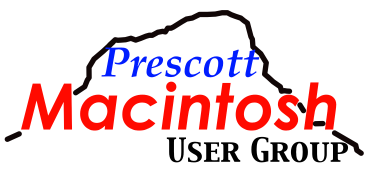by John C
How does AI really work? It is not necessary to understand any aspect of how an AI functions. All that is really needed to know is how to talk to an AI. Essentially, you first define how the AI should respond. This is done with an agent. An agent is simply a set of instructions to an AI model that define how the AI is to respond to a question. No agent is required to start a conversation with any AI model. Simply ask a question and hope that the response satisfies the question. It is useful to start an AI chat with instructions to the AI on how you want it to respond. For instance, you can say, “You are a university professor teaching a course in …” Then ask a question about the topic. You can also say, “Provide your response with the voice of …” and give a renowned author’s name. You won’t hear an actual voice, but the text will be formatted as though the author wrote the response. There are AI models that will actually speak to you as well as provide the actual text.
NotebookLM.com is an AI model designed by Google for the express purpose of doing research on material that you provide, like websites, PDFs, videos, audio files, and images. It does NOT scan the Internet for additional information as do all the other AI models. Google claims that none of the information provided by you or created by NotebookLM is used to further train the AI model. In other words, you absolutely own everything and it is completely private. The downside is that when you close a session, you lose all the information. But that is true of all AI models. You do create an account using your Google email address. You can leave a session (log out), and when you log back in, all previous sessions that have not been closed are still alive and intact.
You.com is both a website and an app for mobile devices. You also create an account for you.com, which can be any email address. The advantage of you.com is that you have access to over a dozen different AI models, each with its own pros and cons. If you purchase the Pro account (monthly or annual), you get all the benefits that any of the AI models offer with very few limitations. The free account limits the number of chats and prompts that you can be involved in per day as well as imposing some limitations on what some models are capable of. I prefer to use Claude 3 Opus for research. Claude 3.5 Sonnet gives the fastest possible response to a prompt. Every month, you.com announces new AI models that are available.
The following agent is taken from one of the you.com examples for creating an agent. Notice that the more detail you provide in the prompt, the more precise will be the response:
Description: Your task is to summarize the notes from the provided meeting in a clear, concise, and organized manner. The summary should capture key discussion points, decisions made, action items, and any follow-up tasks or deadlines. Organize the summary into sections, such as "Agenda Overview," "Key Discussions," "Decisions Made," and "Action Items," to ensure clarity. Highlight any important points that require attention and include any relevant context or background information that helps in understanding the decisions or actions. Example Input: "Meeting notes from the project kickoff meeting on August 27, 2024. Discussed project scope, timeline, roles and responsibilities, and potential risks." Example Output: Meeting Summary: Project Kickoff - August 27, 2024 1. Agenda Overview: Project Scope Timeline and Milestones Roles and Responsibilities Risk Assessment 2. Key Discussions: Project Scope: Defined the main objectives and deliverables of the project. Agreed on the scope of work, emphasizing the need to avoid scope creep. Timeline and Milestones: Established key milestones with tentative dates. Discussed the need for regular progress check-ins to stay on track. Roles and Responsibilities: Assigned roles to each team member. Clarified responsibilities to ensure accountability. Risk Assessment: Identified potential risks, including resource constraints and tight deadlines. Discussed mitigation strategies, such as contingency planning. 3. Decisions Made: Finalized project scope and deliverables. Confirmed the project timeline with initial milestone dates. Assigned key roles and responsibilities to team members. 4. Action Items: [Team Member Name]: Draft and distribute the project plan by September 1, 2024. [Team Member Name]: Schedule bi-weekly check-ins to monitor progress. [Team Member Name]: Develop a risk management plan by September 5, 2024. 5. Follow-up Tasks: Review the draft project plan in the next team meeting on September 3, 2024. Finalize and sign off on the risk management plan by September 7, 2024.
You can either submit that prompt and then attach the meeting transcript, or you can attach the transcript and then submit the prompt. With NotebookLM, the same is also possible with a much greater flexibility and almost no prompting with an agent since several agents are preprogrammed into NotebookLM that are suitable for that task.
PS: Using your iPhone with iOS 18.2 and using the Notes app, you can record meetings live and get real time transcripts and then submit the transcript to an AI.
How to Record and Transcribe Audio in Notes on your iPhone
